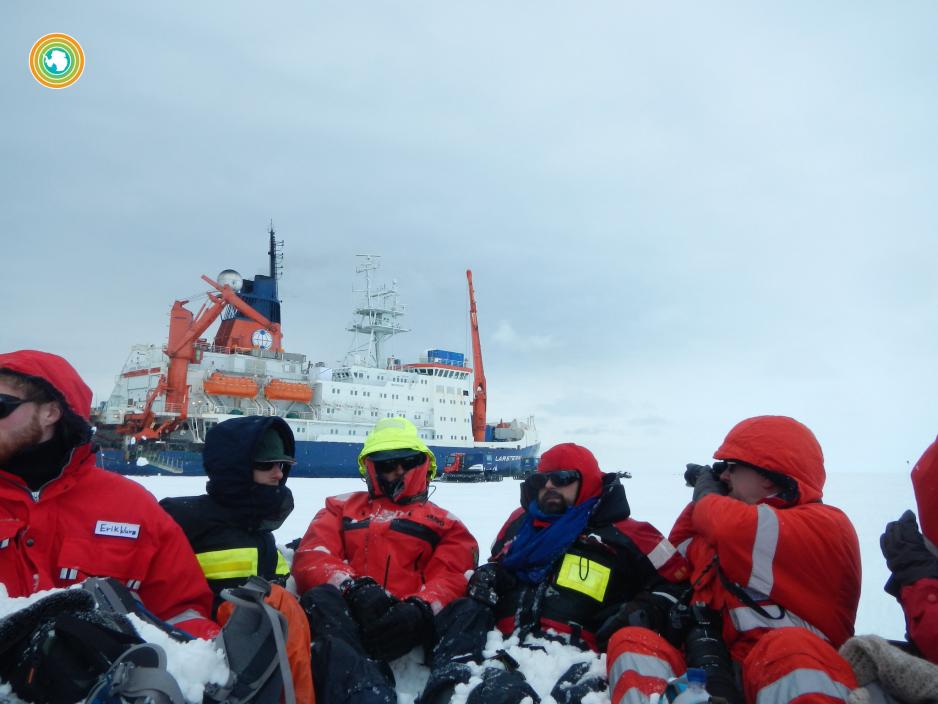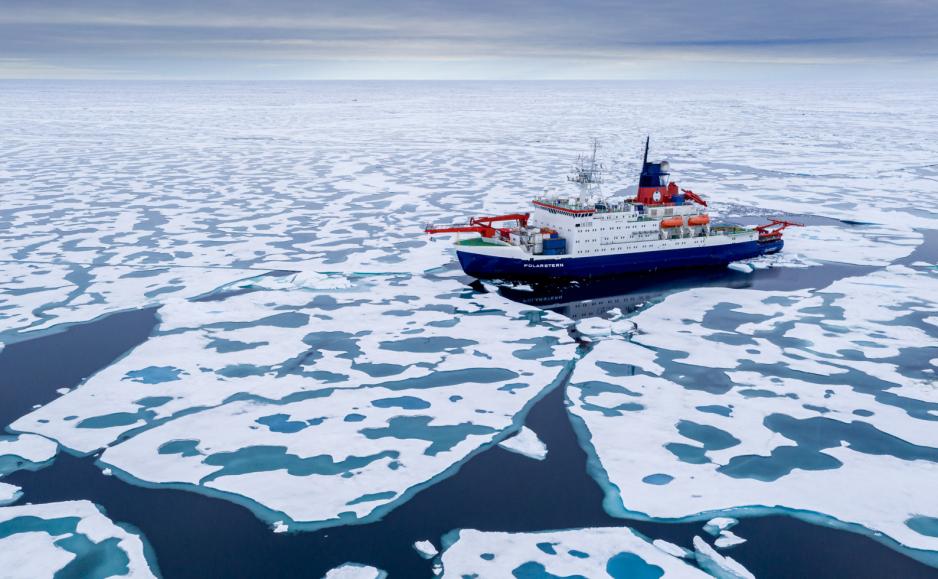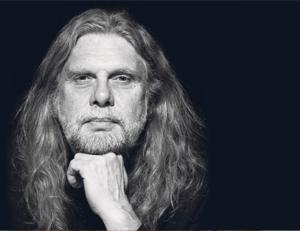Newsletter See you at the North Pole

Researchers from 19 countries participated in the Mosaic-expediction to follow Fridtjof Nansens trail when the research ship "Polarstern" headed towards the North Pole in the middle of winter. (Photo: Hannah Zanowski SOCCOM Project).
Dear reader! Surely it is breaking news when 90 degrees North has gone from being a remote and inhospitable place to being a point to which anyone with a medium-sized boat engine can get.
He surely would have gazed with his eyes wide open, the late polar explorer Fridtjof Nansen, if he had monitored the icebreaker ‘Polarstern’ following his own trail through the polar ice.
The goal of the MOSAiC expedition onboard was to allow the modern research vessel to drift through the ice by copying Nansen’s groundbreaking expedition with the wooden ‘Fram’ vessel in 1893-96; a voyage appearing to be nearly impossible only a few years ago, and for 'Polarstern' to also reach the North Pole.
This week, however, ‘Polarstern’ reached its goal. And not just that; it only took them a matter of days to get through the polar ice.
The captain of ‘Polarstern’ was surprised to see how easy it was to cross through the ice up to 90 degrees North. What they had envisioned would be a long-lasting voyage through thick ice was a quick one through fairly thin and porous ice.
Open water
Normally, avoiding the area north of Greenland is good as there is thick and old ice and nearly impossible areas.
“However, now we find wide stretches of open water reaching almost all the way to the North Pole”, says captain Thomas Wunderlich.
According to scientists, this is the new normal and we should simply stop being surprised. We have to adjust to the changes happening quickly.
Little transition capacity
However, this summer’s events clearly demonstrate that we are unable to transition at the pace of change. It happens too fast.
For instance, take a look at energy supplies to Longyearbyen, Svalbard. The coal power plant providing the community with power and heat was to operate for another 20 years from now.
That should allow authorities ample time to find a new and more sustainable solution than coal.
Record heat
Nevertheless. Summer heat hit the Arctic with record-high temperatures, which resulted in the glacier covering the Svalbard coalmine melting fast, filling the mine with water.
The coal power plant only has enough coal to last six months for its supplying Longyearbyen with energy. As per today, there is no clear plan B for alternative energy supply to this vulnerable community.
Normalization of the Arctic
The climate was also on the agenda when Danish Foreign Minister Jeppe Kofod visited Tromsø, Norway with his Norwegian counterpart Ine Eriksen Søreide. The two ministers were presented with a bleak reality for those who live and work in the High North.
Yes, cooperation, research and security matter in the Arctic. But there also have to be people to cooperate with. In the words of Anu Fredrikson, Chair of the Arctic Economic Council:
“The most important peacekeeping effort in the Arctic would be having people living there and their having a job to go to.”
Painting it black vs Reality
In his Friday commentary, our Editor-in-Chief Arne O. Holm points at exactly that; population figures in the High North. The problem, if indeed it is considered a problem, is that 92 percent of the Norwegian population will live south of the border of its now two Arctic counties.
Some call it painting a bleak image. Holm calls it reality.
“Silencing reality to death and rather talking about mountains and fjords is an excuse for not having to deal with the situation.”
Increased security policy pressure
The world’s attention is at the Arctic. Even the smallest move is monitored and analyzed.
As a countermove to the increased US interest in Greenland, Copenhagen now worries about being sidelined if the USA speaks directly with Greenland about security politics. Therefore, Denmark has reinforced its efforts in Greenland through sending a political advisor to Nuuk, argues Professor Rasmus Gjedssø Bertelsen at the University of Tromsø.
There is no doubt that we are facing thrilling times ahead.
We are happy to receive tips about big and small news from you all.
Thank you for following us and have a great week!
Trine Jonassen
News Editor, High North News



